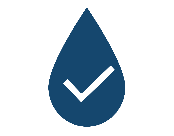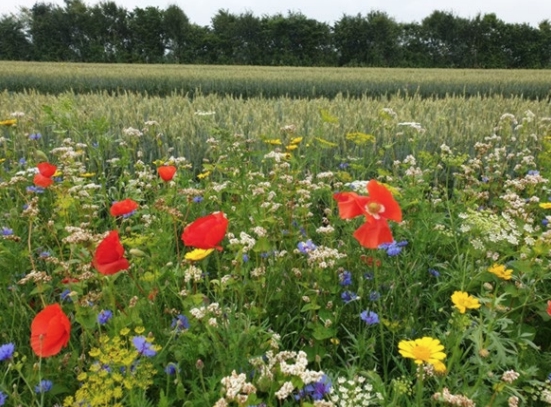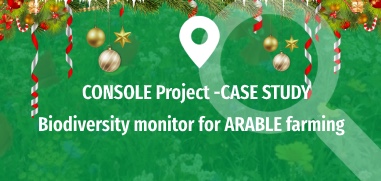Summary
With the successes with the Biodiversity Monitor dairy farming (started in 2014 – see other Console case study), the arable farming sector has been inspired to create a Biodiversity Monitor specifically for arable farming in the Netherlands (started in 2018).The concept is similar; differences include the stakeholder coalition and KPIs.
The Biodiversity Monitor for arable farming is a result-based methodology, with a primary focus on the public good biodiversity (including strong links with soils, landscape, environment and climate). The aim of the methodology is to make biodiversity enhancing performance per arable farm measurable. In this way it becomes possible to benchmark farms and allow multiple stakeholders to appreciate and reward positive biodiversity performance. These stacked financial rewards should lead to new revenue models for ecosystem-based arable farming. As a consequence, it offers farmers action perspective to improve practices for more sustainable production. The methodology is currently being developed by WWF-NL, Branch Organization Arable Farming, province Groningen and Rabobank, in collaboration with scientists, experts, stakeholders and farmers.
The biodiversity-enhancing performance per arable farm is measured with an integrated set of Key Performance Indicators (KPIs). The set of KPIs is currently (Jan. 2020) still under construction, but will likely include indicators on topics around emissions, inputs, soil management and nature & landscape elements on the farm. These KPIs will be selected based on multiple criteria, including their scientifically proven relation with biodiversity, connection to existing data systems (minimize extra admin), and that performance can be influenced in the short term by taking on farm measures. The KPI research, selection and piloting will be executed in 2020-2022 by scientists from Wageningen University & Research and Louis Bolk Institute, in collaboration with Boerennatuur and farmers. For each KPI, scientists will also determine threshold- and target values based on existing legislation and policies, and the best available scientific knowledge. Good performance on the integrated set of KPIs can be linked with financial rewards from multiple stakeholders. Note that the Biodiversity Monitor provides a scientifically substantiated methodology to measure biodiversity-enhancing performance per farm, while contracting parties who use this data are free to decide how they reward the farmer.
Because the research/development and piloting of KPIs is still ongoing, no contracts using the Biodiversity Monitor systems have been implemented yet. Similar to the dairy sector, the arable sector can use the Biodiversity Monitor KPIs in private-private and private- public contracts, and there is much potential for integrating it in the new Common Agricultural Policy (CAP). It is foreseen to involve multiple rewarding parties (e.g. arable produce buyers, cooperatives, banks, land leaseholders, water boards, governments) to use the Biodiversity monitor to reward and stimulate ecosystem-based arable production.
Objectives
The objective of the Biodiversity Monitor is to make biodiversity enhancing performances per arable farm measurable (using an integrated approach). This allows multiple stakeholders to financially reward positive biodiversity impacts based on unambiguous scientifically relevant results. The stacked financial rewards from multiple stakeholders, based on the same KPIs, will stimulate farmer to practice ecosystem-based arable farming. In this way, the Biodiversity Monitor stimulates the transition towards more sustainable production while enhancing biodiversity recovery, additional farmer income, and a future perspective for the arable sector.
Public Goods






Problem description
The Netherlands are among the European countries with the biggest challenge when it comes to protecting biodiversity (EEA, 2015). Populations of wild animals in the agricultural landscape decreased by 50% since 1990 (WWF-NL, 2020). These massive losses of nature are largely related to increased intensification and scale of agricultural production over the past decades.
With a 29% land share (CBS, 2019), the arable sector is one of the biggest users of agricultural land in the Netherlands and puts significant pressure on biodiversity – both on farmland and on adjacent nature areas. The arable lands are generally intensively managed with short rotations, high input levels of fertilizers, pesticides and soil tillage. This type of management threatens wildlife species such as field birds and insects. Most non-agricultural landscape elements, such as hedges and flowery corners, have disappeared during land consolidation processes for scaling.
This leaves less and less space for birds, butterflies, and other animals to forage, seek shelter and nest. Moreover, the quality of these habitats declines due to environmental pollution caused by agricultural (and other) activities. Especially nitrogen deposition and leaching causes eutrophication of soils and water, leading to losses of plant species and life in freshwater. All these practices together affect the entire wildlife food-web, leading to a massive loss of biodiversity in the agricultural landscape and beyond.
Changes in farming practices are urgently needed to stop and reverse biodiversity losses, but also to ensure the continuation of agricultural production which depends on ecosystem services (e.g. clean water and healthy soils). However, current markets provide small margins on arable produce, resulting in low income for farmers what stimulates intensification even further.
In order to create a future perspective for nature and arable farmers, new business models are required to make ecosystem-based arable farming a sustainable, profitable and attractive practice for farmers. In the light of that challenge, the Biodiversity Monitor for arable farming has been established by a multi-stakeholder coalition consisting of WWF-Netherlands, BO Akkerbouw (branch organization arable farming Netherlands), province Groningen, and Rabobank (largest agricultural financer in the Netherlands).
